Small parts on your aircraft like fasteners and hardware, seals and gaskets, light bulbs and lenses, and other “smaller” components can be easy to ignore or defer, but if ignored, can become big problems. In this article, we’re going to cover what deferred maintenance is, why it can lead to greater maintenance costs, who might defer maintenance, and more.
What is Deferred Maintenance?
Deferred maintenance refers to putting off repairs, upgrades, replacements, or other maintenance work for equipment and infrastructure. When a task is deferred, it doesn’t mean the maintenance doesn’t need to happen, it just means it’s being put off. Because of this, it can lead to greater maintenance costs down the road.
According to the National Business Aviation Association (NBAA), minimum equipment lists (MELs) outline what equipment is necessary to perform a flight and what equipment may be legally deferred. Similarly, an aircraft’s configuration deviation list (CDL) specifies regulator-approved non-structural external parts that may be missing, yet the aircraft may still be airworthy.
According to Aviation Safety, the FAA is pretty straightforward when it comes to deferring maintenance. Federal Aviation Regulation 91.213 says that “no person may take off an aircraft with inoperative instruments or equipment installed…” There are two exceptions to this regulation:
- If an airplane operates with a MEL or
- The operator complies with paragraph (d) of the regulation.
What is the MEL?
The minimum equipment list, according to the Department of Transportation, is a document listing items that may be inoperative during flight for a specific aircraft or a fleet of aircraft. Operation of the aircraft under the MEL is authorized by an operator specific letter of authorization (LOA).
Here is a helpful example from Aviation Safety Magazine outlining what the MEL is:
For example, a landing gear door can be missing (removed) for a certain number of days or flight hours or cycles before it must be re-installed and a maximum operating speed limit or a weight reduction is specified to make sure structural or performance problems are addressed. Minimum equipment lists are how airlines are able to fly complex machines with small discrepancies while still maintaining a consistent, acceptable level of safety.
When is Aircraft Maintenance Typically Deferred?
Aircraft maintenance is typically deferred when a non-critical issue arises that doesn’t immediately affect the aircraft’s airworthiness or safety of flight, and regulations (the MEL) allow the aircraft to continue operating for a set period under specific conditions.
For example, certain lights, external parts, or inoperative equipment that doesn’t affect flight safety. Although it might sound simple, it’s important not to make assumptions about what makes an aircraft operable/inoperable. You have to make sure that the equipment is not “part of the VFR-day type certification instruments and equipment prescribed in the applicable airworthiness regulations under which the aircraft was type certificated.”
What is the Cost of Deferring Aircraft Maintenance?
You might feel like you’re saving money in the short-term when you defer maintenance but putting it off can often drive up the cost. Minor wear can turn into major damage; a small oil leak might just need a $20 seal today, but if left unchecked, it can require a full engine overhaul. What might start as a two-hour job could eventually triple labor hours later, not to mention, unplanned downtime is expensive. The longer your plane is AOG, the more you pay for it.
AAI Can Exchange, Overhaul, and Provide Support for Your Aircraft
At AAI, we know you want certified parts for your aircraft. Cutting corners or sacrificing quality is not an option. You are responsible for the safety of everyone who boards your aircraft. When you work with us, you work with a company that is certified and trustworthy.
Detailed, thorough, and expert work is required to get the job done the right way. At AAI, we know your ultimate goal is to get your plane fixed so you can fly. That’s why we go above and beyond to help you avoid extra costs by creating repairs and manufacturing the parts on your aircraft that are prone to corrosion and wear, like landing gear components.
Aircraft maintenance and overhaul requires quick turnaround times. You don’t want a hangar full of planes propped up on jacks, creating a traffic jam for everyone trying to maneuver around them. AAI completes inspections and repairs in-house so that parts get turned around quickly, and you can return your aircraft to normal operation.
Do you have questions about AAI’s process or available parts? Contact us for more information and be sure to sign up for our Frequent Flyers Email Newsletter to get our articles, updates about industry events, and links to our favorite online content delivered right to your inbox every month.
